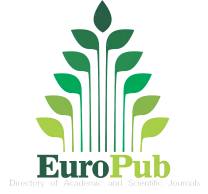Editor-in-Chief:
Jianli Gao,
School of Pharmaceutical Sciences, Zhejiang Chinese Medical University, Hangzhou, China
Marcello Iriti,
Plant Biology and Pathology, Department of Agricultural and Environmental Sciences, Faculty of Agricultural and Food Sciences, Milan State University, Milan, Italy
ISSN:
2706-8447 (Online)
2998-1824 (Print)
Frequency: quarterly
Submission to final decision:
60-90 days
Acceptance to publication: 15 days
Category:
Integrative & Complementary Medicine
Pharmacology & Pharmacy
Medicine, Research & Experimental
© 2025 The Author(s). Published by Exploration and Verfication Publishing






